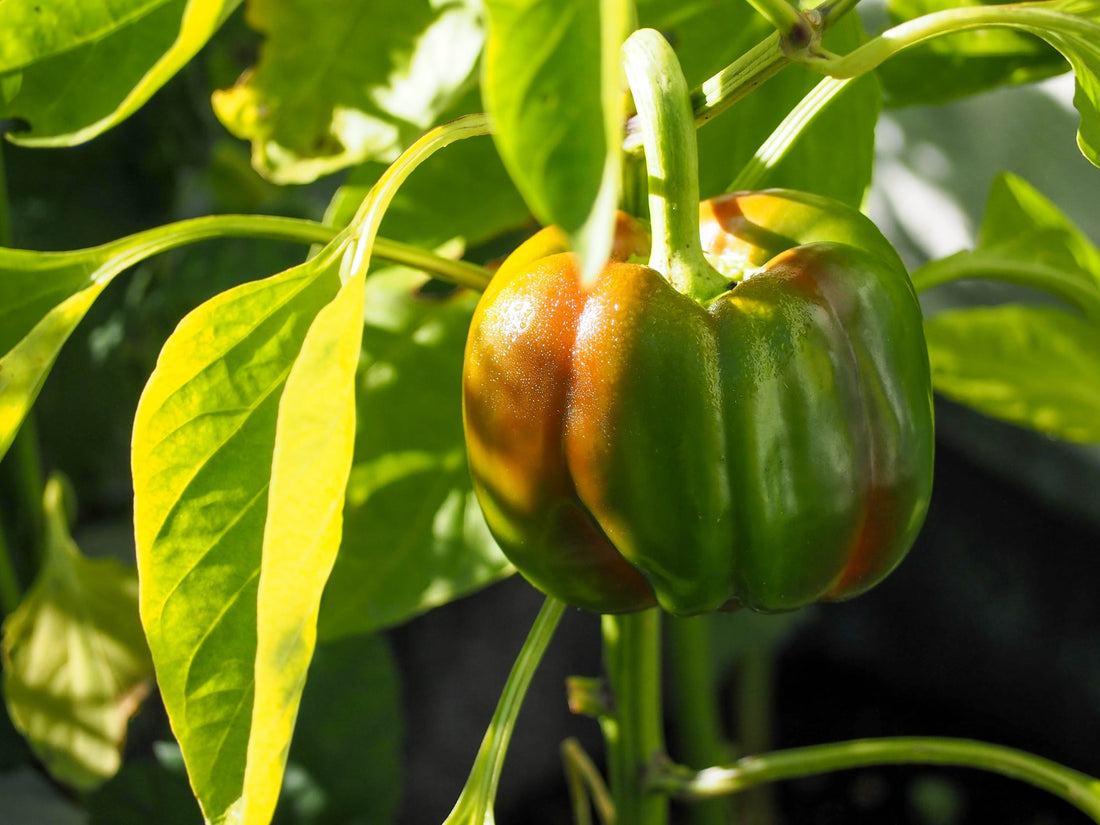Peppers are sensitive plants. They like warmth, but not overly hot weather. Peppers also need a long growing season and a specific nutrient boost for the soil. The best way to maximize pepper production is to fertilize them properly. You also need to keep an eye on the plants as they grow so you can adjust their environment as needed.
Beginner Guide To Fertilizing Pepper Plants
Peppers want well-draining soil, full sun, and consistent and frequent watering. Amending the soil with fertilizer helps provide the best nutrients. Manure, compost, or commercial fertilizer are all viable fertilizer options. Whichever one you choose, it is crucial to make sure it has the correct balance.
It is essential to fertilize the garden before planting so the soil is ready to give the plants the necessary boost straight away. There are several options when it comes to fertilizing.
Garden centers stock bags of commercial fertilizer, which are marked with a three-number code. This number code indicates the percentages of nitrogen, phosphate, and potassium in the fertilizer. The first number is the nitrogen level, the second number is the phosphate level, and the third is the potassium level.
For peppers, a 5-10-10 blend is ideal. A blend with too much nitrogen will produce lots of beautiful foliage but less fruit. Higher percentages of phosphate and potassium encourage larger peppers and more prolific production. And, the lower nitrogen helps the plant grow without negatively affecting the fruit.
If you choose to fertilize with compost or manure, just be sure it doesn't contain too much nitrogen.
Another option, instead of treating the entire garden bed with fertilizer, is to mix a little bit of compost or commercial fertilizer with some soil and place it into the bottom of the hole before you plant.
After you've put the fertilizer in the hole, cover it with 1-2 inches of additional soil, and then plant as usual. This method gives each plant a concentrated dose of nutrients. Covering it with the additional soil protects the roots from direct contact with the fertilizer and getting burned.
After the peppers have been transplanted, side-dress them with additional fertilizer at 4 weeks and 8 weeks. Side-dressing is applying fertilizer
several inches from the base of the plant. This is the best way to fertilize because a direct application may burn the stems or foliage. The fertilizer should not touch the plants.
Apply the fertilizer 4-6 inches away from the base of the plants. The best way to do this is to dig a one (1") inch trench along either side of the row of peppers. Then, add the compost, manure, or balanced fertilizer to the trench. Cover the trench with soil and water the plants and ground afterward to ensure the fertilizer is absorbed.
When the plants begin to fruit, there is no need for fertilizer unless the plants are struggling or have poor foliage growth. If poor foliage growth is a problem, apply a side-dress of 10-10-10 fertilizer. The additional nitrogen will assist the plant's foliage without negatively affecting the fruit too harshly.
When your pepper plants get the appropriate nutrients when they need them, they will give you a great harvest. Peppers may be sensitive, but they are great fun to grow and taste amazing fresh from the garden.
Check Out Our Amazing Selection of Peppers Here At Islas!



